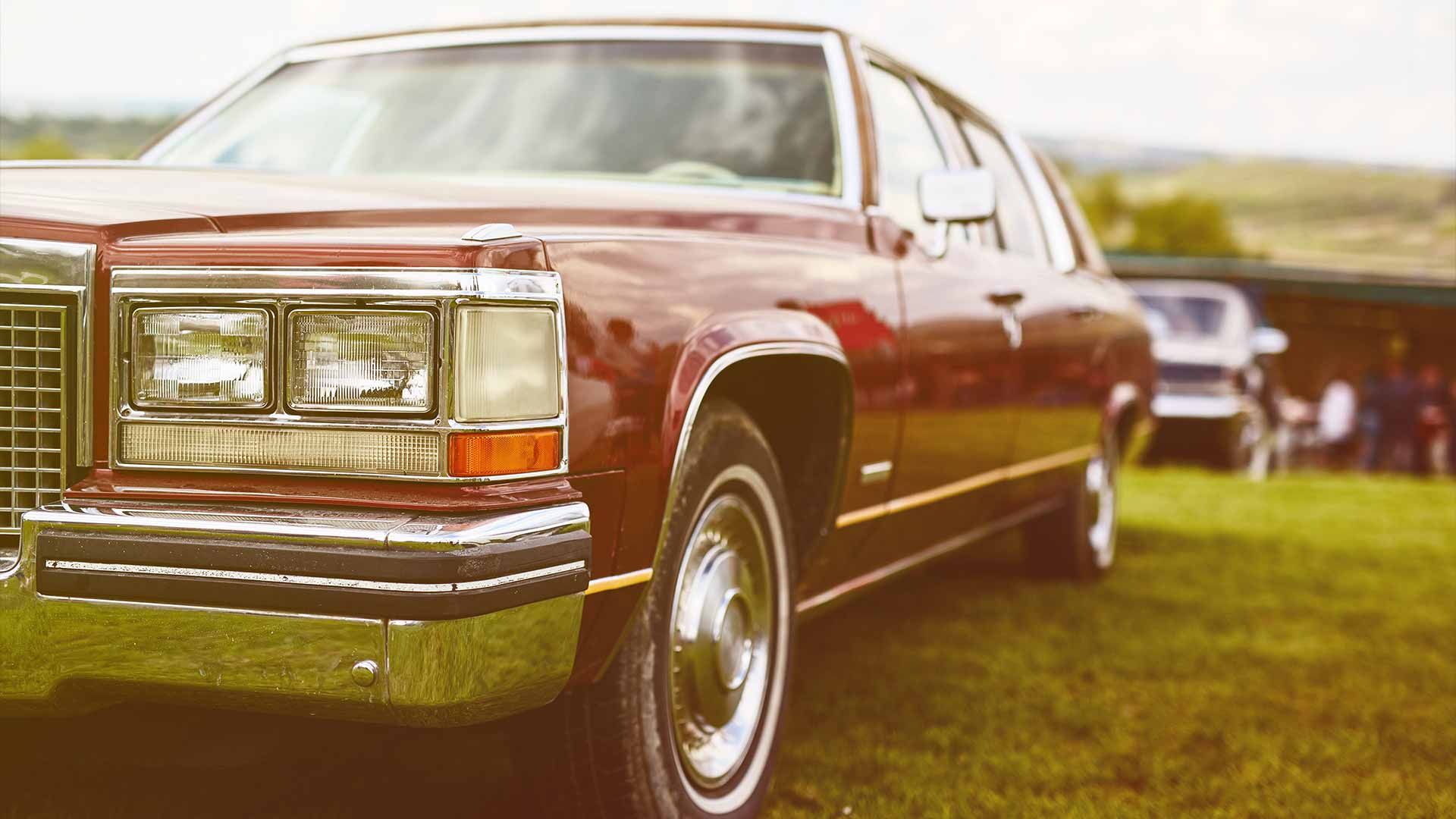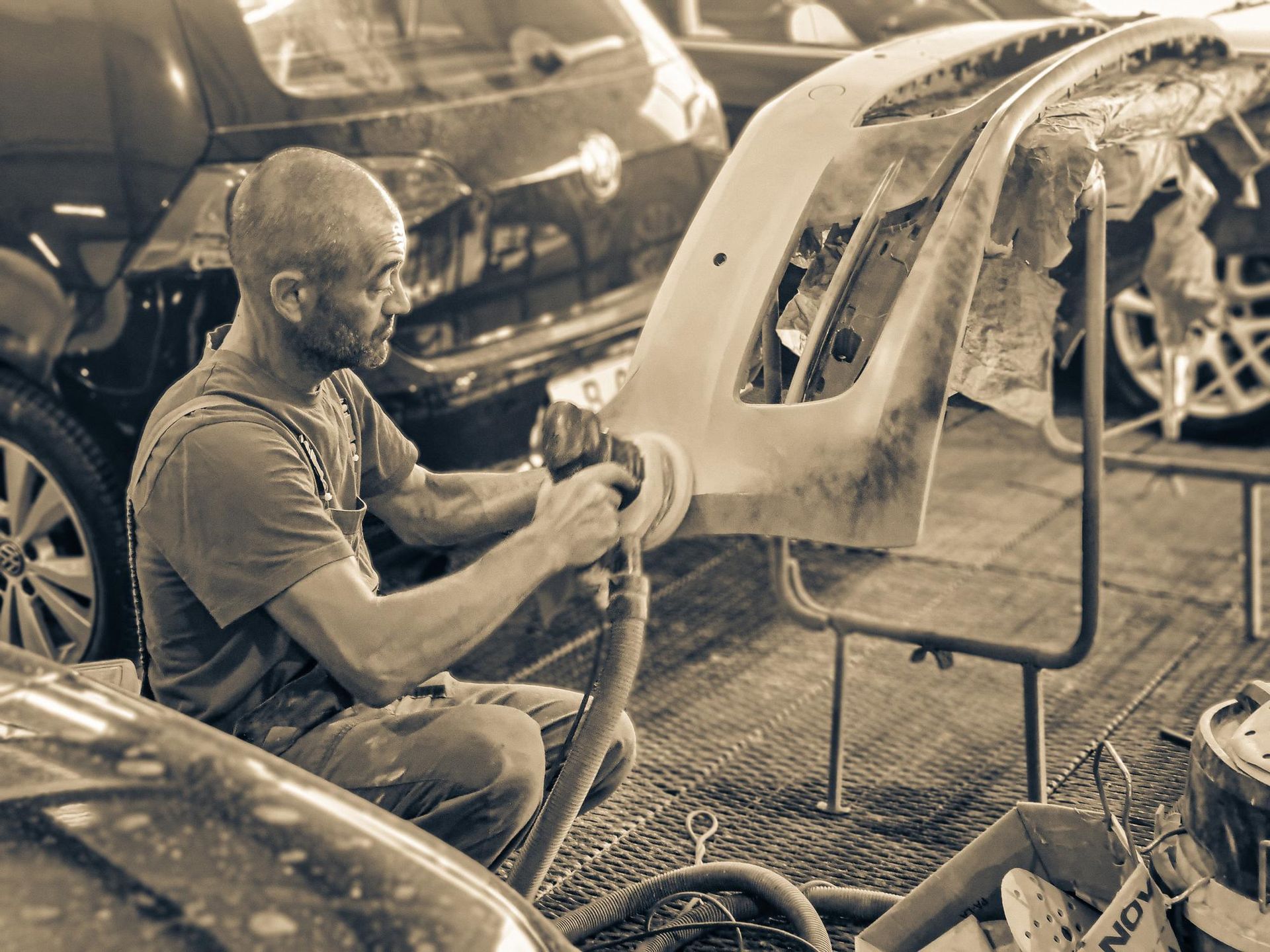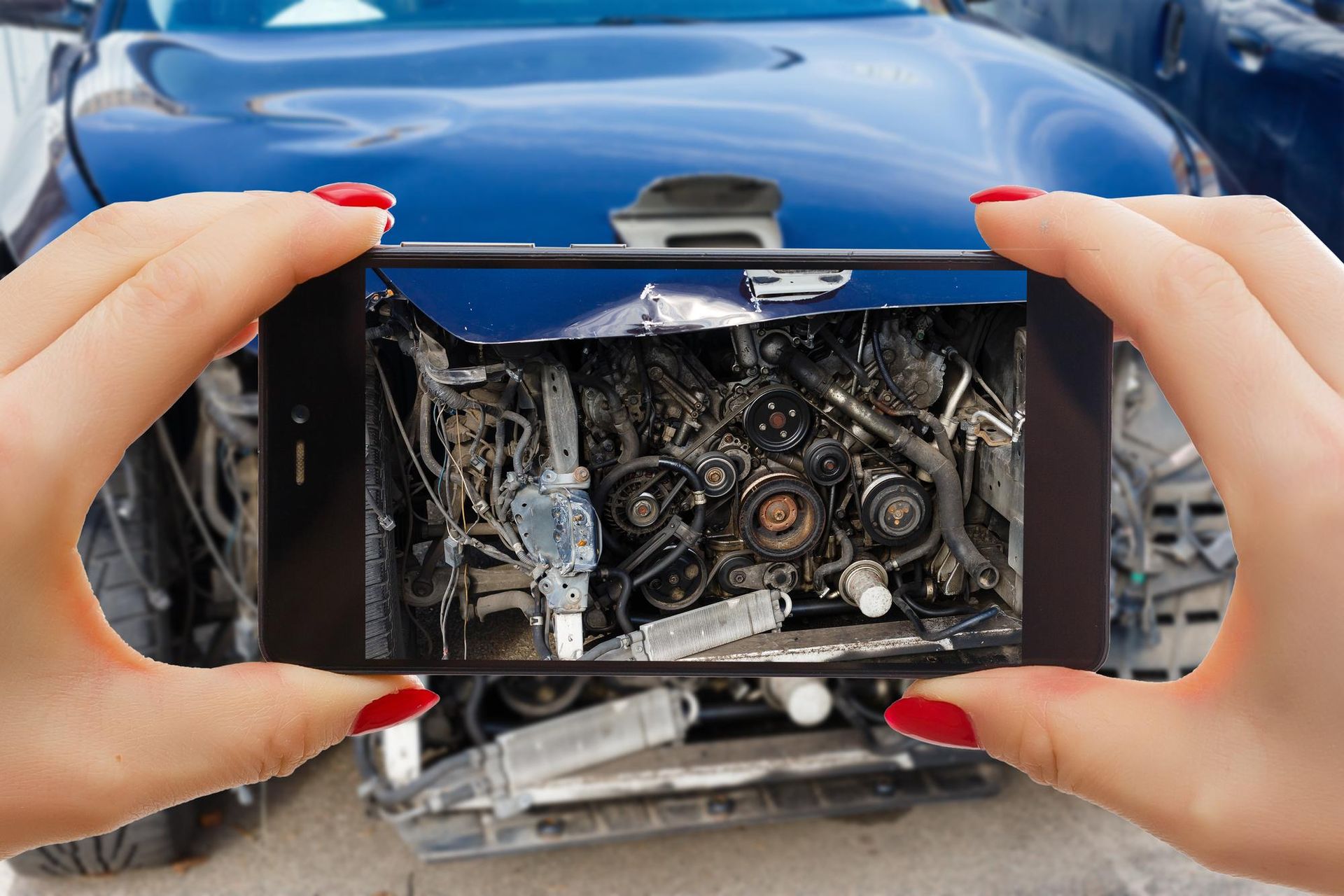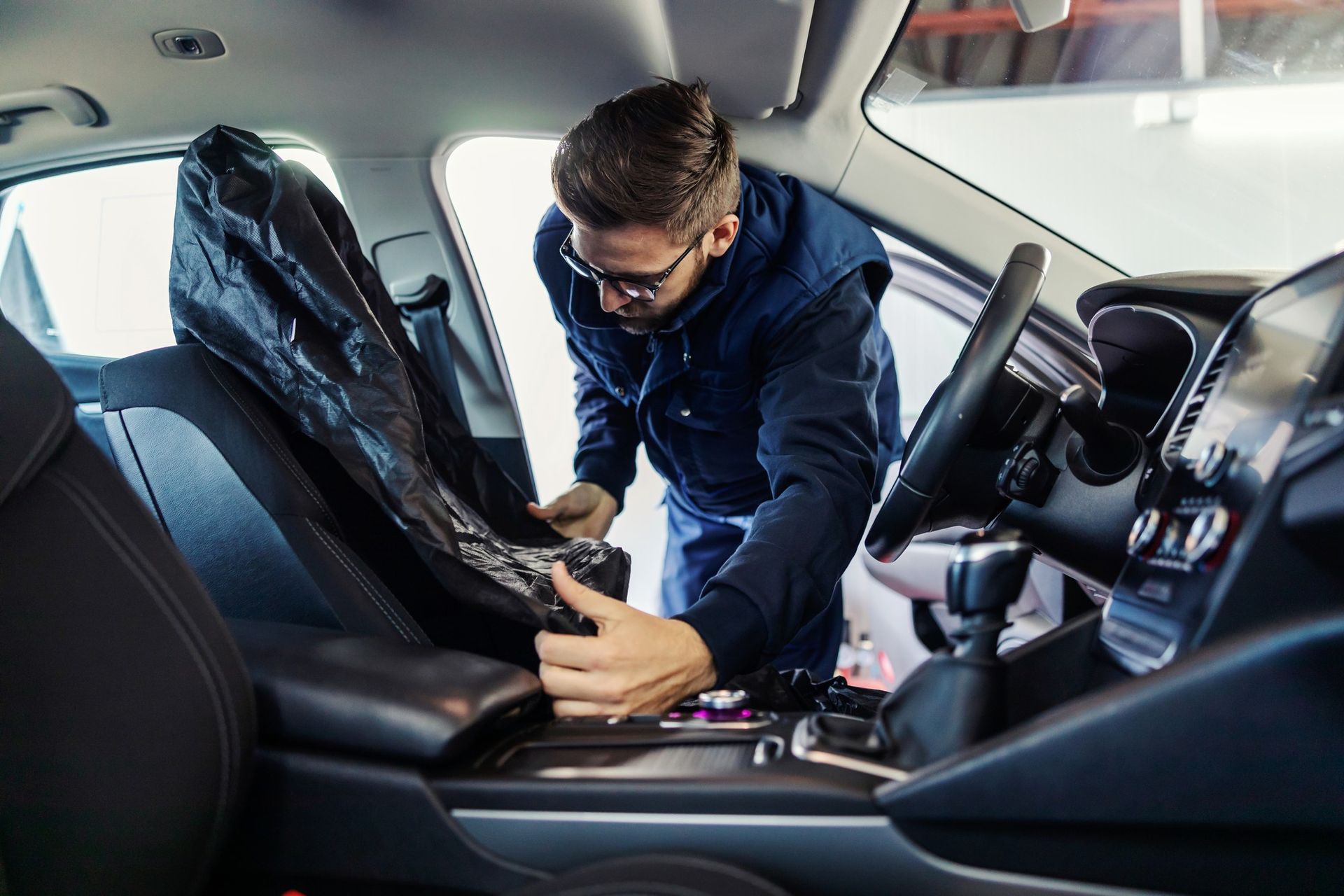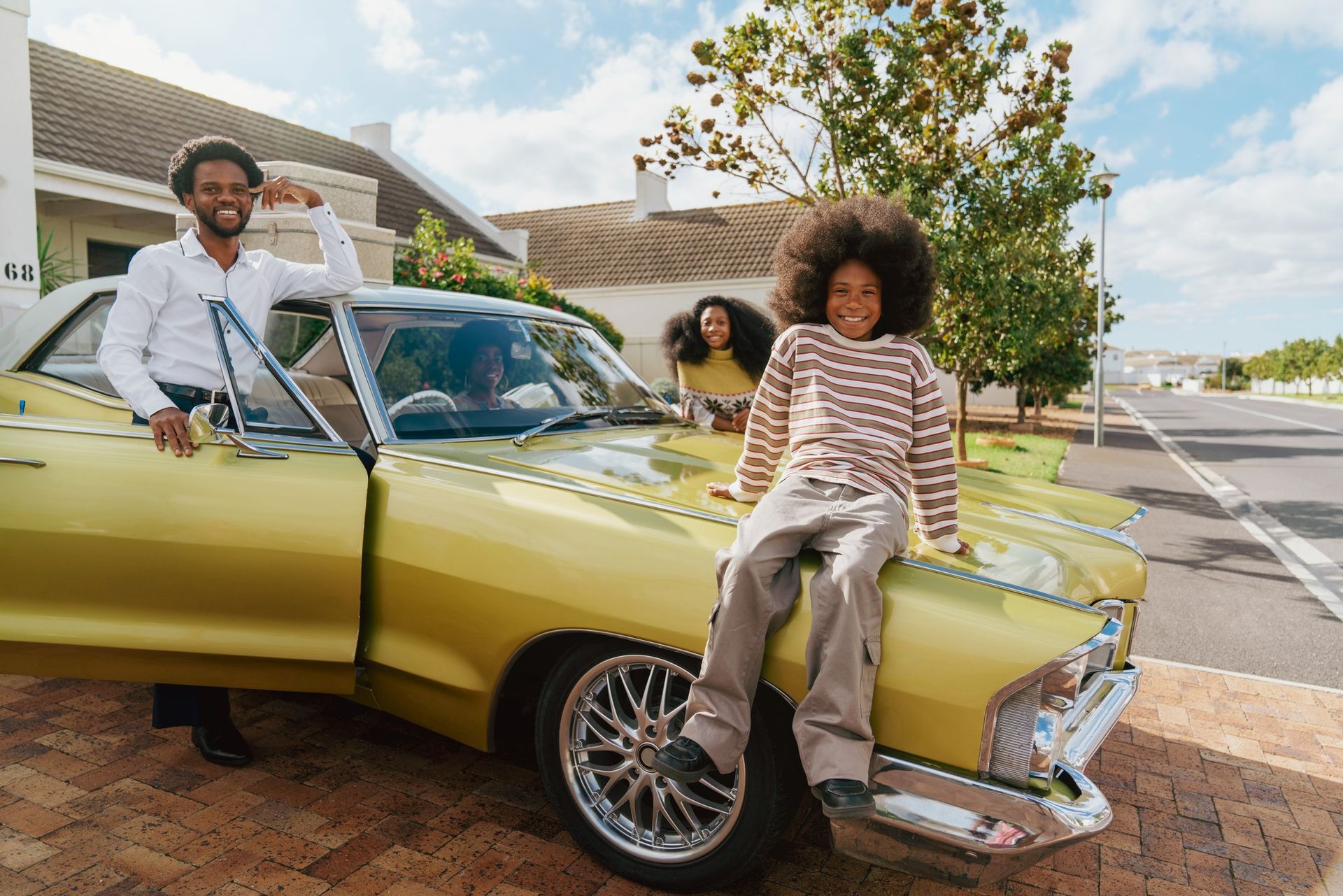Restoring Classic Cars: How to Bring Vintage Beauties Back to Life
Restoring classic cars, a captivating journey into the world of vintage automobiles, has been a beloved pastime for enthusiasts around the globe. Old car restoration is not merely about repairing and refurbishing; it's about breathing new life into automotive gems from a bygone era. These vintage beauties carry stories of yesteryears, and each restoration project is a labor of love and dedication.
Classic car restoration is an art form that transcends generations. It allows us to relive the golden age of automobiles and appreciate the craftsmanship that defined an era. Whether it's a rusty relic hidden in a barn or a family heirloom longing for revival, the restoration process is a thrilling adventure that captivates both seasoned collectors and newcomers alike.
In this comprehensive guide, we will delve into the art of old car restoration, sharing tips, techniques, and the sheer joy of bringing vintage cars back to life. Whether you're a passionate enthusiast or someone curious about the world of classic cars, this journey promises to inspire and educate, revealing the magic behind the
resurrection of these timeless treasures.
The Art of Classic Car Restoration
Classic car restoration is more than just a mechanical endeavor; it's an art form that requires a deep appreciation for history and a keen eye for detail. Restoring vintage automobiles isn't merely about fixing broken parts; it's about reviving the character and soul of these automotive classics.
Imagine breathing life back into a vintage beauty that has weathered decades. It's like restoring a piece of history, a tangible connection to a time when cars were more than mere transportation – they were masterpieces of design and engineering. Classic cars evoke a sense of nostalgia and admiration, and their restoration is a tribute to the ingenuity of the past.
Restorers often become historians, researching the history of a car's make and model, its original specifications, and the era in which it thrived. They painstakingly recreate every detail, from the upholstery to the paint color, to ensure the car's authenticity.
Classic car restoration is a labor of love, a passion that transcends generations. It's a testament to the enduring allure of vintage automobiles and the dedication of those who strive to keep their legacy alive. In the following sections, we will explore the steps and considerations involved in embarking on a classic car restoration journey.
Choosing the Right Classic Car
Before embarking on a classic car restoration project, one must carefully choose the right vintage vehicle to breathe new life into. The selection process is a crucial first step in the journey of old car restoration.
First and foremost, consider your personal preferences and interests. Are you drawn to the sleek lines of a mid-century sports car, or does the rugged charm of a vintage truck appeal to you? Your passion for the project will sustain you through the restoration process, so choose a car that resonates with you.
Next, assess the condition of potential candidates. Some cars may be in better shape than others, while some may require extensive work. Inspect the car's body, engine, interior, and chassis to gauge the level of restoration needed. Don't be discouraged by a little rust or wear; many classic cars have been successfully restored from worse conditions.
Research the availability of parts and resources for your chosen make and model. Some vintage cars have a robust aftermarket parts market, while others may require more effort to source components. Knowing what you're getting into regarding parts availability is crucial for budgeting and planning.
Lastly, consider the authenticity and originality of the car. Some collectors prefer a vehicle that adheres closely to its original specifications, while others may be open to modifications and customizations.
Choosing the right classic car is a pivotal decision that sets the tone for your restoration journey. Whether it's a cherished family heirloom or a newfound treasure, the selection process should align with your passion and commitment to preserving automotive history. In the next section, we'll explore the essential tools and equipment needed for a successful
classic car restoration project.
Essential Tools and Equipment
When embarking on the journey of old car restoration, having the right tools and equipment at your disposal is essential. These tools are the lifeblood of your project, allowing you to disassemble, repair, and restore every component of the vintage vehicle with precision and care.
1. Hand Tools: A comprehensive set of hand tools, including wrenches, sockets, screwdrivers, pliers, and hammers, is indispensable. These tools enable you to tackle a wide range of tasks, from removing nuts and bolts to manipulating small components.
2. Power Tools: Power tools such as drills, angle grinders, sanders, and impact wrenches expedite tasks and ensure accuracy. They are especially useful for tasks like sanding, cutting, and drilling.
3. Lifting Equipment:
A reliable car lift or jack stands are essential for safely elevating the vehicle, providing access to the undercarriage and chassis. This equipment is critical for inspecting and repairing components beneath the car.
4. Painting and Finishing Tools: Achieving a flawless finish requires paint guns, sandpaper, masking tape, and body filler. These tools ensure that your classic car's appearance matches its mechanical excellence.
5. Diagnostic Equipment: Modern diagnostic tools, including OBD-II scanners, can help identify and address engine and electronic system issues efficiently.
6. Safety Gear: Don't forget personal protective equipment such as safety glasses, gloves, and respirators to safeguard yourself during the restoration process.
7. Workshop Space: A well-organized and adequately equipped workspace is crucial. Ensure you have ample space to disassemble, repair, and store components, as well as proper lighting for precision work.
8. Reference Materials: Manuals, repair guides, and reference materials specific to your car's make and model are invaluable for understanding its intricacies and specifications.
Investing in quality tools and equipment is an investment in the success of your classic car restoration project. These tools not only make the restoration process more efficient but also ensure that you achieve the level of detail and authenticity required to
bring vintage beauties back to life. In the next section, we'll discuss the importance of planning and budgeting for your project.
Planning and Budgeting
Planning and budgeting are integral components of a successful old car restoration project. Without a well-thought-out plan and a clear budget, you may find yourself facing unexpected challenges and financial strains along the way.
1. Creating a Restoration Plan: Start by outlining a detailed restoration plan. Identify the specific tasks and repairs needed for each component of the car, including the body, engine, interior, and electrical systems. A comprehensive plan serves as your roadmap, ensuring that no crucial steps are overlooked.
2. Setting a Realistic Budget: Determine your budget for the restoration project. Consider factors such as the cost of acquiring the vintage car, the price of replacement parts, tools and equipment expenses, labor costs (if outsourcing any work), and unforeseen contingencies. It's essential to set a budget that aligns with your financial capabilities and project goals.
3. Contingency Fund: Always allocate a portion of your budget for unforeseen expenses or unexpected repairs that may arise during the restoration process. Having a contingency fund ensures that you can address surprises without derailing your entire project.
4. Prioritizing Tasks: Prioritize restoration tasks based on their urgency and importance. Some components may require immediate attention, while others can be addressed later in the project. This prioritization helps you allocate resources effectively and stay on track.
5. Tracking Expenses: Maintain meticulous records of all expenses incurred during the restoration. This includes the cost of parts, tools, labor, and any additional expenditures. Tracking expenses helps you stay within your budget and identify areas where cost-saving measures can be applied.
6. Review and Adjust: Regularly review your restoration plan and budget as the project progresses. Adjustments may be necessary due to unforeseen circumstances or changes in your priorities. Flexibility in planning allows you to adapt to evolving project needs.
A well-planned restoration project with a clear budget provides a roadmap for success. It helps you avoid financial surprises and ensures that your vintage beauty is restored within your means and to your satisfaction. In the following sections, we will delve into the step-by-step restoration process and explore the challenges and common issues you may encounter along the way.
Step-by-Step Restoration Process
The classic car restoration process is a series of carefully planned and executed steps that transform a vintage vehicle from a weathered relic into a pristine masterpiece. While the exact sequence of tasks may vary depending on the car's make and model, here is a general overview of the step-by-step restoration process:
1. Disassembly: Begin by disassembling the car, carefully removing all components and parts. Document the disassembly process, take photographs, and label parts to ensure accurate reassembly.
2. Bodywork: Address the car's bodywork needs, including rust removal, dent repair, and panel straightening. Sand and prep the body for paint.
3. Painting:
Apply primer, basecoat, and clearcoat to achieve a flawless finish. Paint the car in the original color or a custom choice, following your restoration plan.
4. Engine Rebuilding: Rebuild or restore the engine, addressing issues like worn-out components, seals, and gaskets. Ensure that the engine performs at its best.
5. Transmission and Drivetrain: Inspect and repair the transmission and drivetrain components, including the gearbox, clutch, and driveshaft.
6. Interior Restoration: Restore the car's interior, including upholstery, dashboard, and trim. Repair or replace damaged or worn components.
7. Electrical Systems: Check and restore the electrical systems, including wiring, lights, and gauges. Ensure proper functioning for safety and functionality.
8. Suspension and Brakes: Inspect and overhaul the suspension and braking systems. Replace worn-out components to ensure a smooth and safe ride.
9. Reassembly: Carefully reassemble the car, following your documentation and labels. Double-check that all components are correctly aligned and fastened.
10. Testing and Tuning: Test all systems, including the engine, brakes, and electrical components. Tune and adjust as needed for optimal performance.
11. Detailing: Give the restored car a thorough cleaning and detailing to bring out its shine and luster. This final step enhances the overall aesthetic appeal.
12. Documentation: Maintain detailed records of all restoration work performed, including receipts, manuals, and photographs. This documentation adds value and authenticity to your classic car.
By following this step-by-step restoration process and adhering to your restoration plan, you can systematically transform an old, worn-out car into a
beautifully restored vintage beauty. In the next section, we'll explore the challenges and common issues you may encounter during the restoration journey.
Challenges and Common Issues
While classic car restoration is a rewarding endeavor, it comes with its fair share of challenges and common issues that enthusiasts should be prepared to face:
1. Rust:
Rust is the arch-nemesis of classic car enthusiasts. It can hide in unexpected places, compromising the structural integrity of the vehicle. Thoroughly inspect and address rust issues during the restoration process.
2. Parts Sourcing: Finding authentic or compatible replacement parts can be challenging, especially for rare or obscure makes and models. Extensive research and networking may be required to locate necessary components.
3. Budget Overruns: Despite meticulous planning, unexpected expenses can arise during a restoration project. It's essential to have a contingency fund to accommodate unforeseen costs.
4. Time Constraints: Classic car restoration is a time-intensive process. Delays can occur due to parts availability, unforeseen repairs, or other life commitments. Patience is key.
5. Skill and Knowledge: Restoration projects often require a range of skills, from mechanical expertise to bodywork and painting proficiency. Lack of experience in certain areas may necessitate outsourcing or seeking expert guidance.
6. Authenticity: Ensuring that the restored car is as authentic as possible can be a challenge. Researching historical accuracy and adhering to original specifications can be time-consuming but is essential for collectors seeking authenticity.
7. Project Scope Creep: It's easy to get carried away with additional customizations or upgrades during the restoration process. While these enhancements can be appealing, they can also lead to budget and timeline overruns.
8. Documentation: Keeping detailed records throughout the restoration process is vital. Failing to document work, expenses, and decisions can lead to confusion and affect the car's value.
9. Safety Compliance: Ensuring that the restored car meets modern safety standards while preserving its vintage charm can be a delicate balance. Consult with experts on safety upgrades if needed.
10. Final Inspection: Conduct a thorough final inspection to catch any overlooked issues or imperfections. Attention to detail at this stage is crucial for achieving a flawless restoration.
While these challenges may seem daunting, they are an integral part of the classic car restoration journey. Enthusiasts who embrace these challenges with dedication and patience often find the process immensely satisfying. In the final section, we'll celebrate the joy of completing a classic car restoration project and the pride of owning a piece of automotive history.
The Joy of Completed Restoration
As you reach the culmination of your classic car restoration journey, a profound sense of accomplishment and satisfaction washes over you. The vintage beauty that was once a neglected relic has now been reborn, ready to grace the roads with its timeless elegance.
Completing a classic car restoration project is a testament to your passion, dedication, and love for automotive history. It's not just about owning a beautiful car; it's about preserving a piece of the past and sharing it with future generations. Your restored classic car is a rolling work of art, a living testament to the craftsmanship of a bygone era.
If you're considering embarking on a classic car restoration journey or need assistance with any aspect of the process,
LR Classics, LLC is here to help. Our team of experts is dedicated to preserving the legacy of vintage automobiles, and we offer a wide range of services, from parts sourcing to full-scale restorations.
Contact us today at
(520) 494-2745 to discuss your classic car restoration needs. Let us help you bring a vintage beauty back to life and experience the incomparable joy of owning a piece of automotive history.
In the world of classic cars, the journey of restoration never truly ends. It's a continuous celebration of craftsmanship, history, and the enduring allure of vintage automobiles. We wish you many miles of joy and satisfaction with your beautifully restored classic car.
Frequently Asked Questions (FAQs)
-
What is classic car restoration?
Classic car restoration is the process of refurbishing and renewing vintage automobiles to their original or improved condition. It involves repairing, rebuilding, and often customizing various components to bring these timeless vehicles back to life.
-
How long does a classic car restoration project typically take?
The duration of a classic car restoration project can vary significantly depending on factors such as the car's make and model, the extent of work required, and the availability of parts. It can range from several months to several years for a comprehensive restoration.
-
What should I consider when budgeting for a classic car restoration?
When budgeting for a classic car restoration, consider factors like the initial purchase price of the car, the cost of replacement parts, tools and equipment expenses, labor costs (if outsourcing work), and a contingency fund for unexpected expenses. It's crucial to set a realistic budget aligned with your project goals.
-
Is it worth restoring a classic car?
Restoring a classic car can be a highly rewarding experience, both personally and financially. While it requires an investment of time and money, the resulting vintage beauty can become a cherished heirloom and potentially appreciate in value over time.
-
Can I undertake a classic car restoration project on my own, or should I seek professional help?
The decision to undertake a classic car restoration project on your own or seek professional assistance depends on your skill level, experience, and the complexity of the project. While some enthusiasts successfully complete DIY restorations, others may prefer to enlist the expertise of experienced restoration professionals to ensure a high-quality outcome.
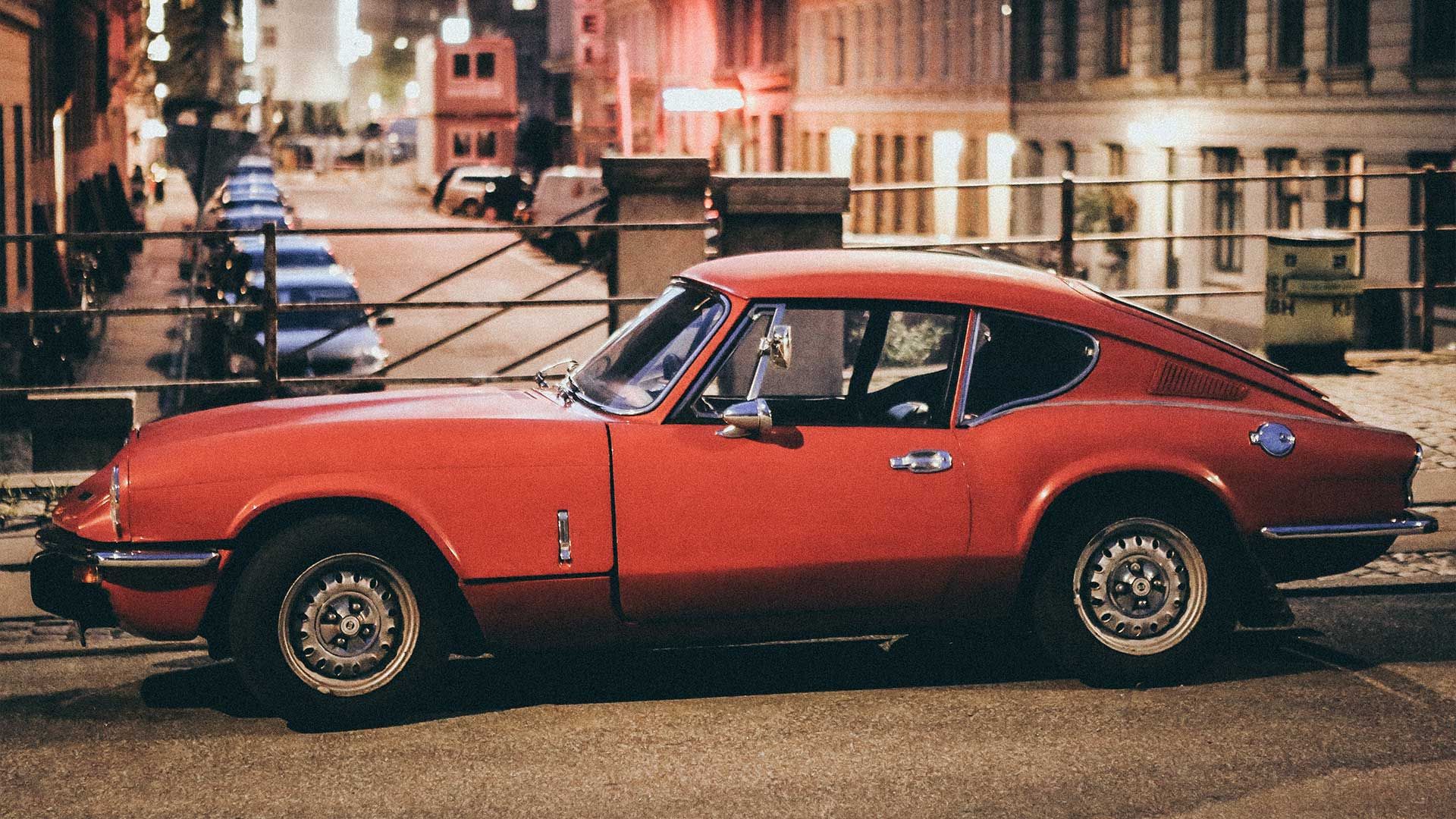
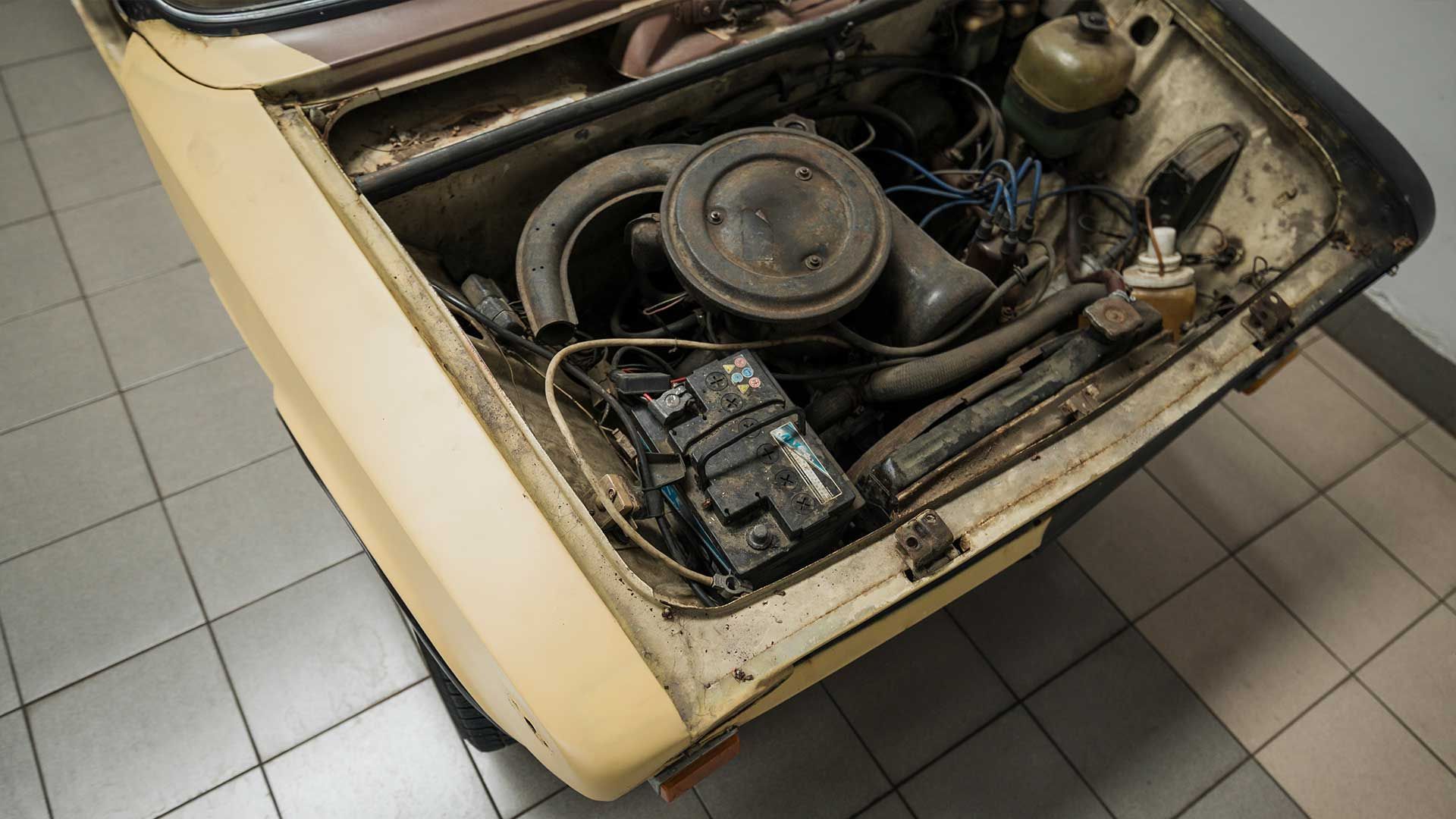
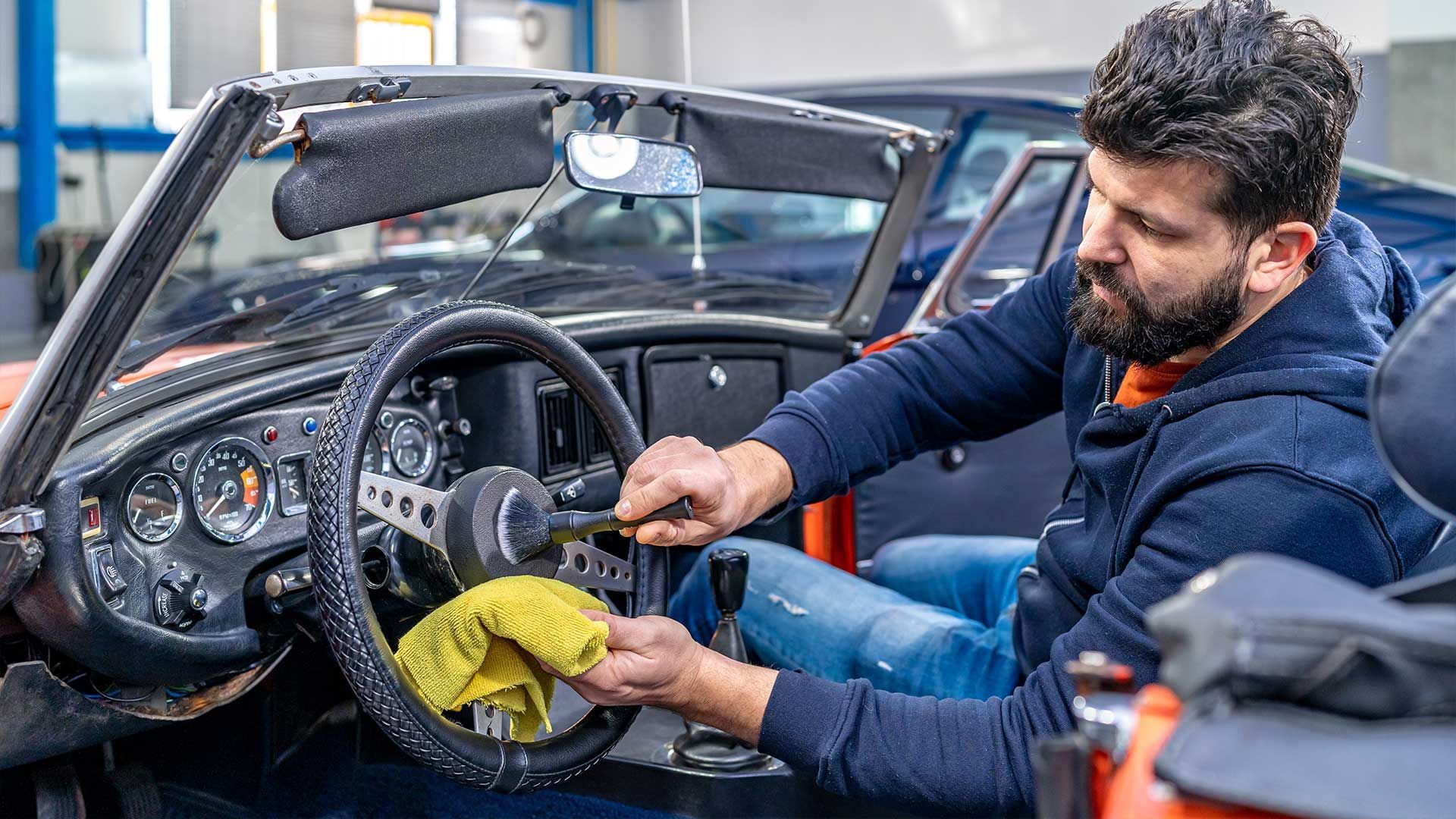
Opening Hours
- Mon - Fri
- -
- Sat - Sun
- Closed
All Rights Reserved | LR Classics


